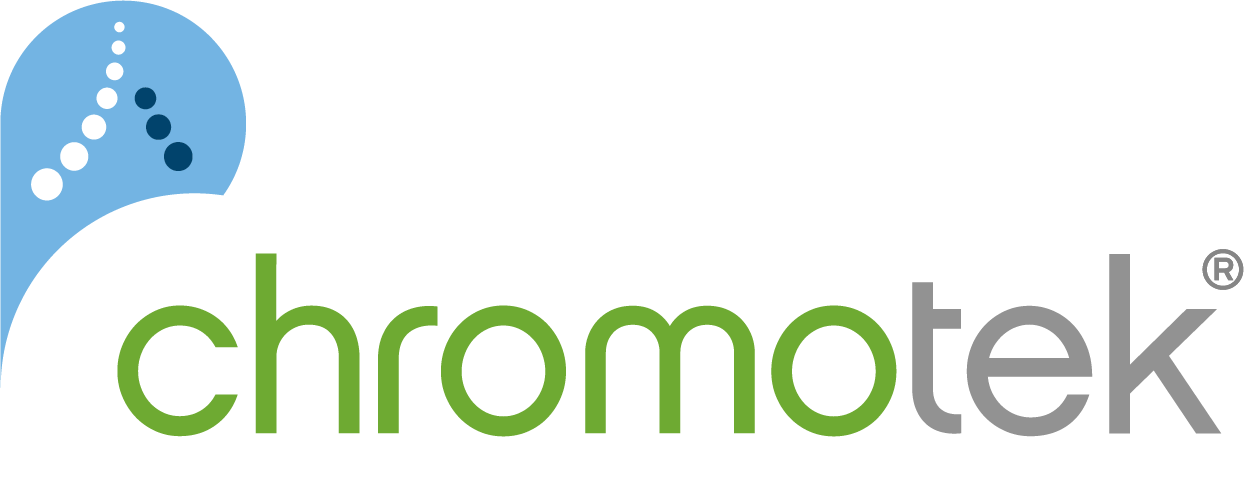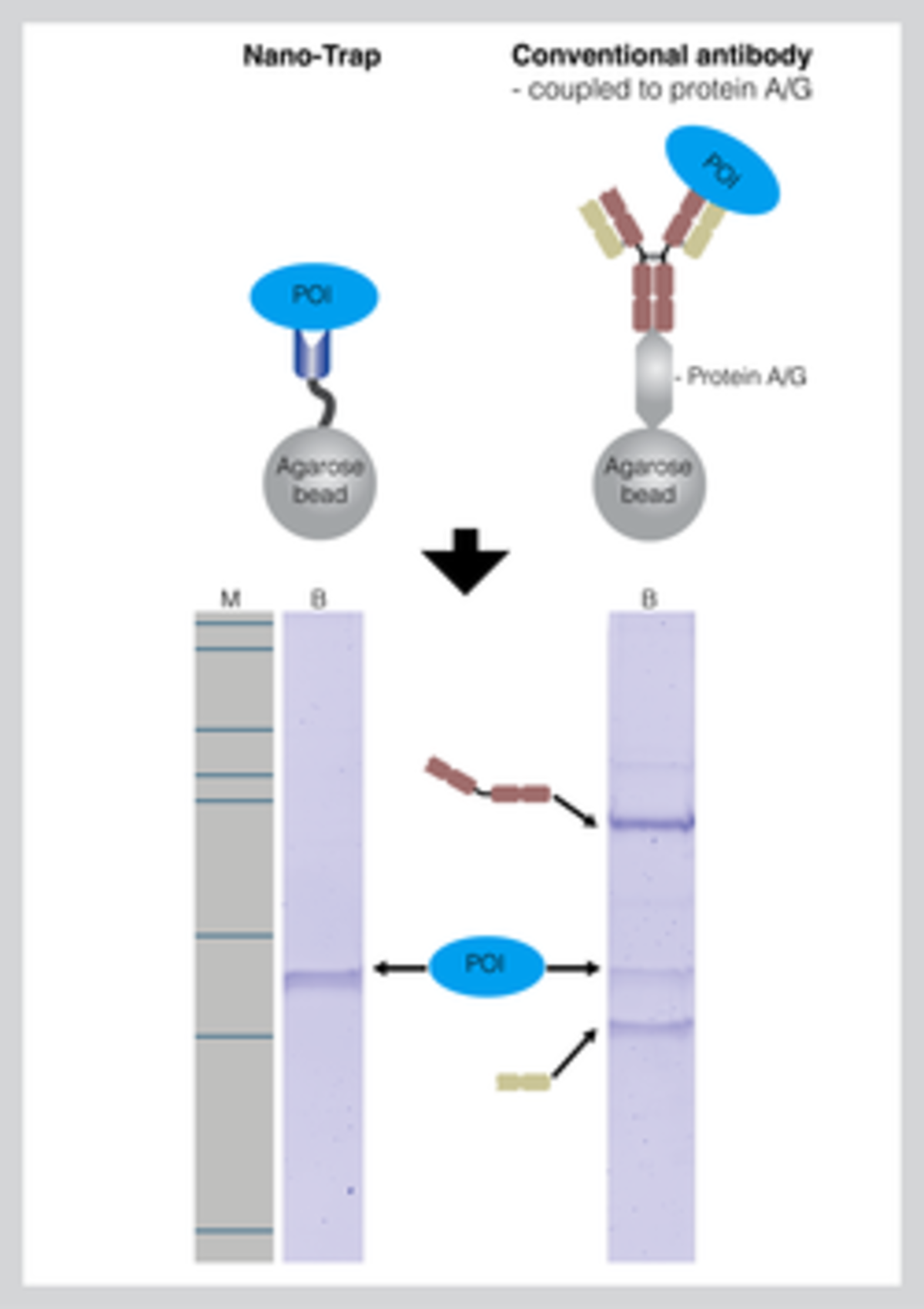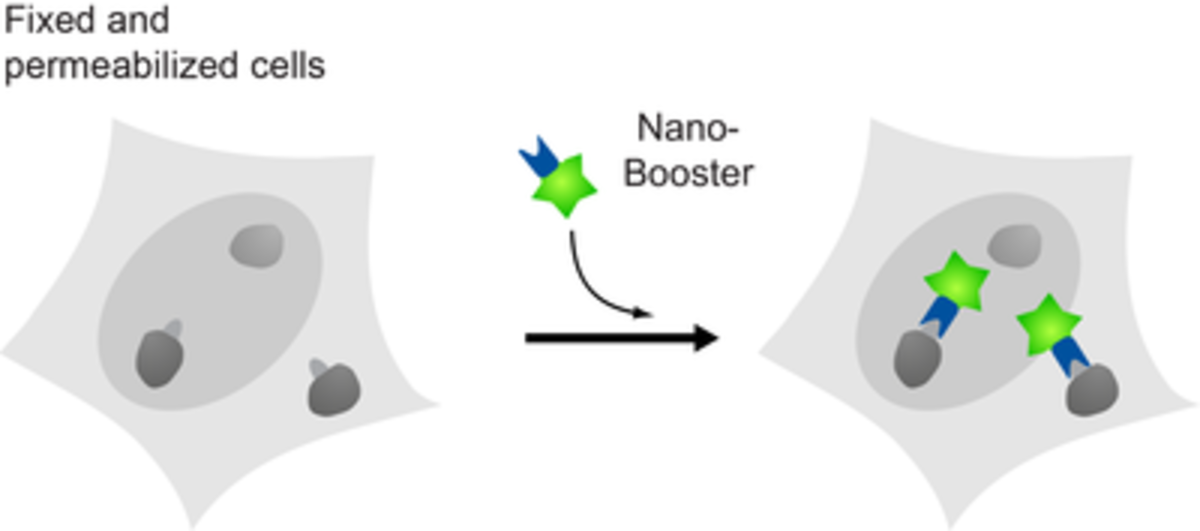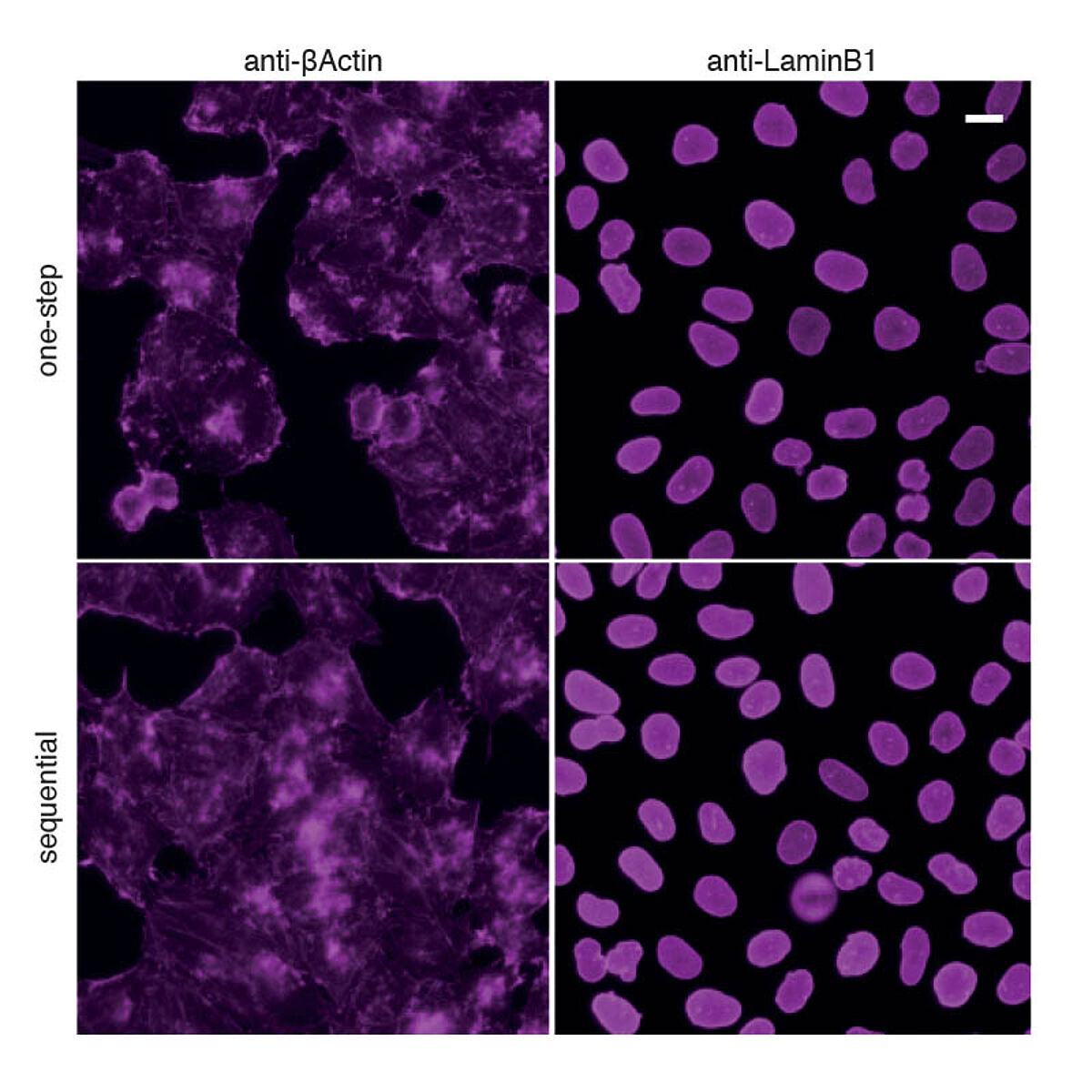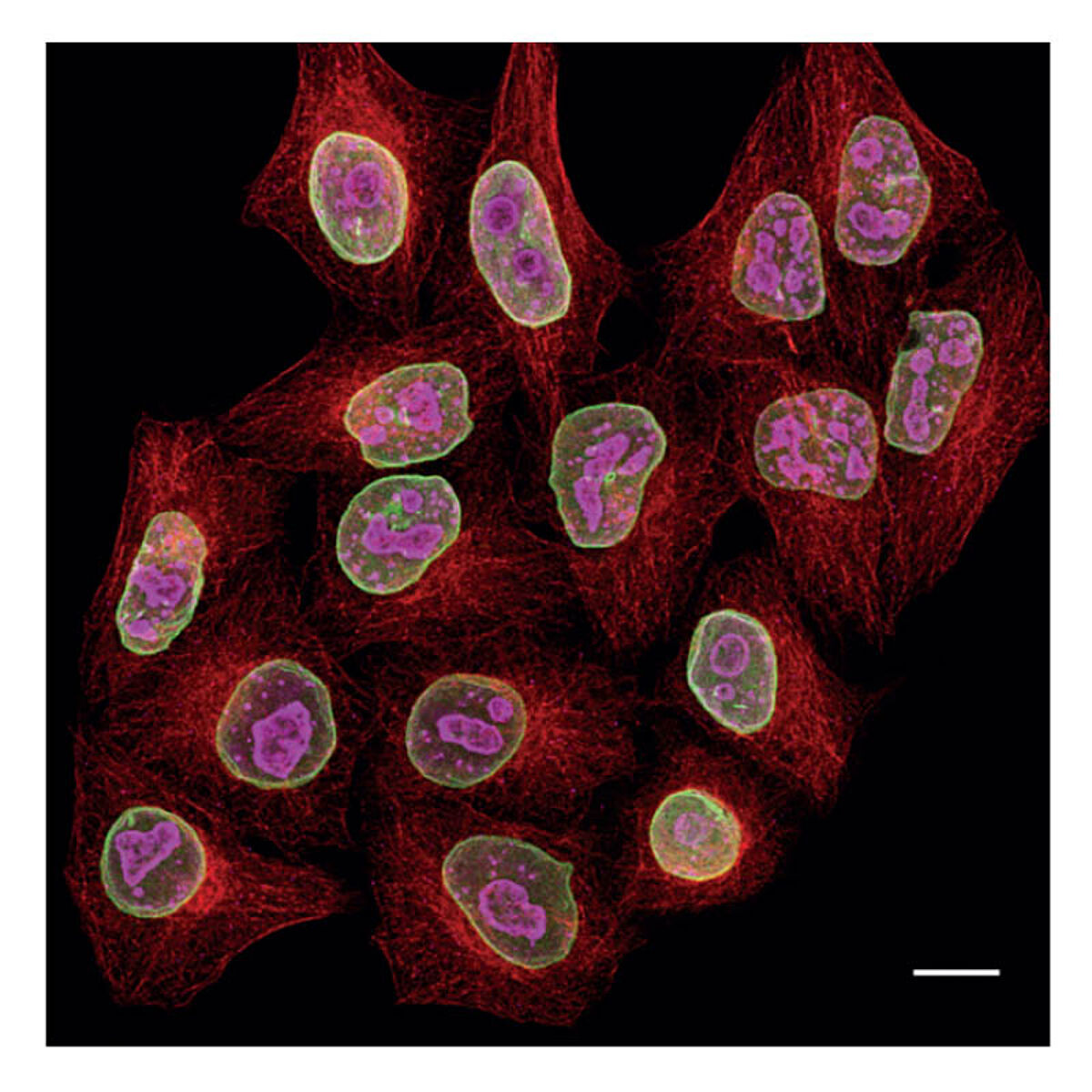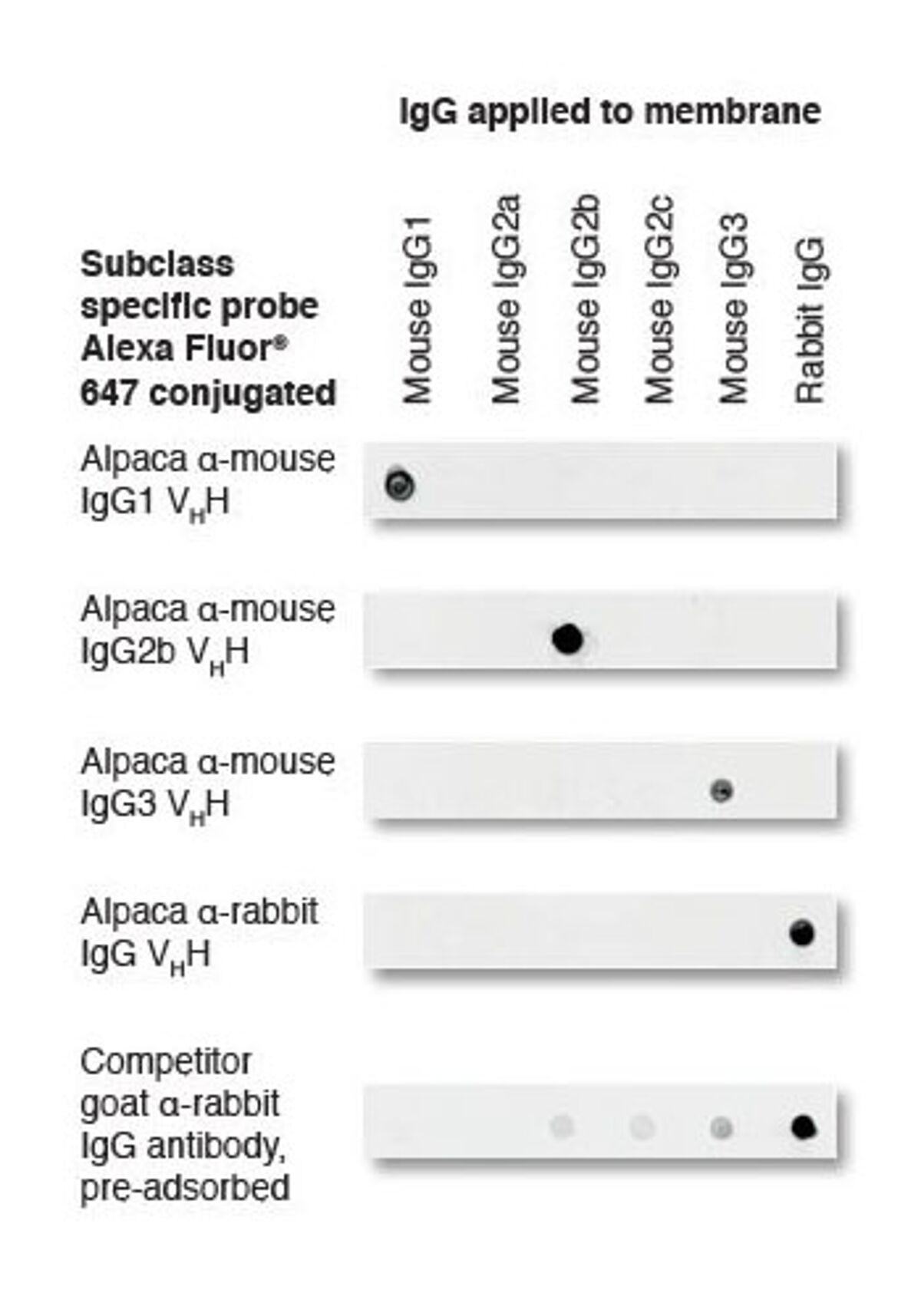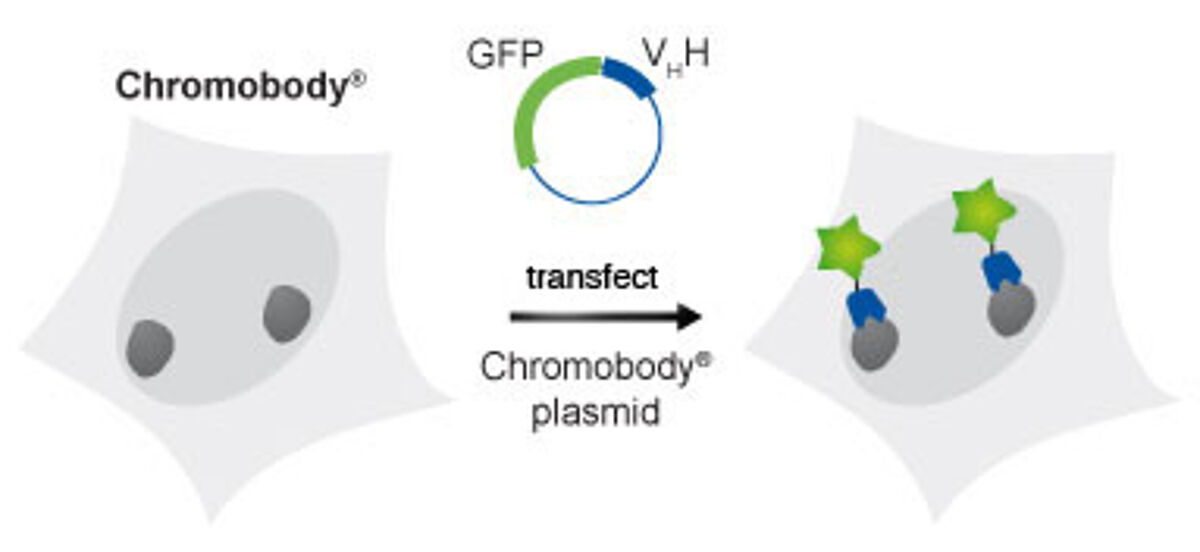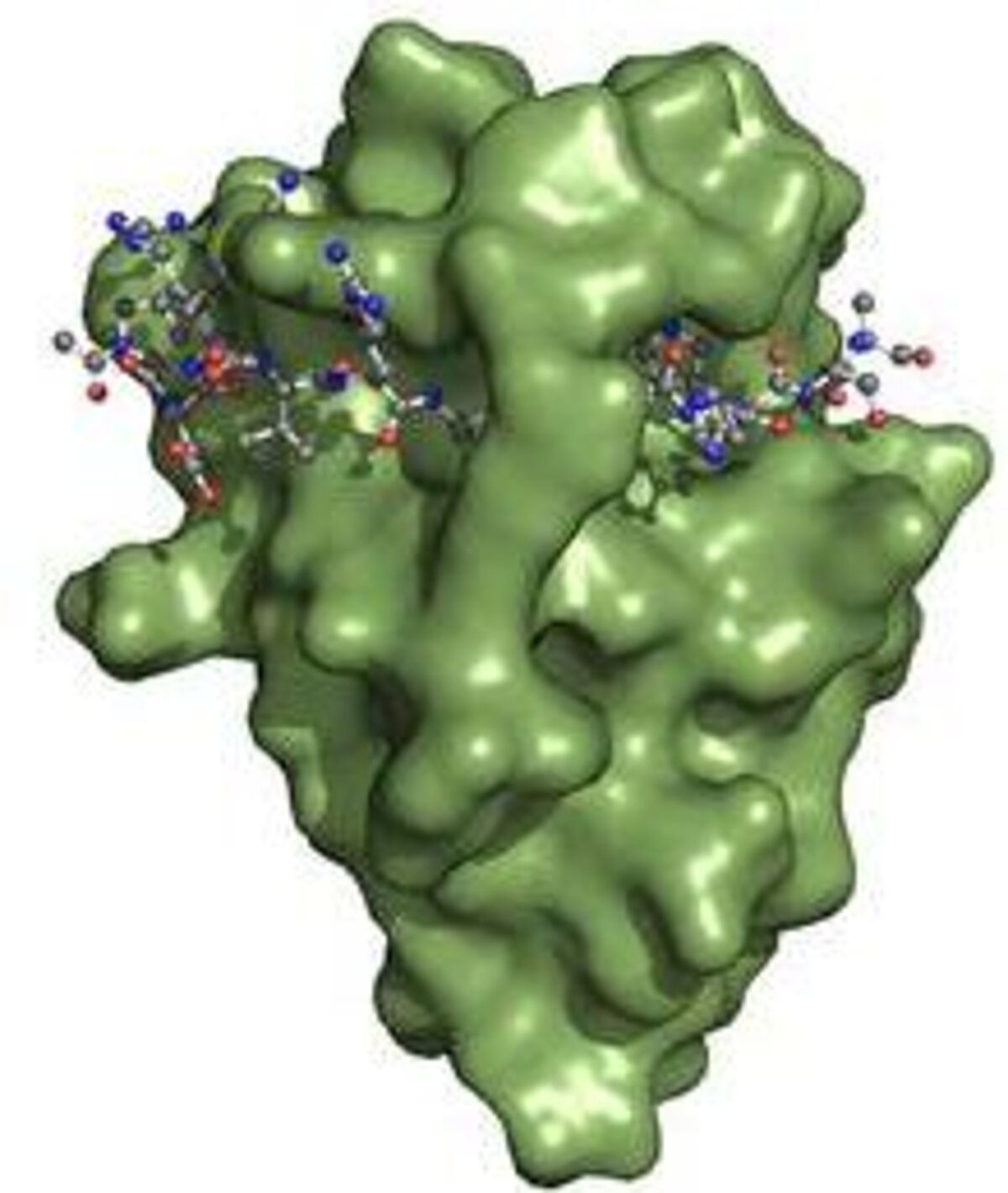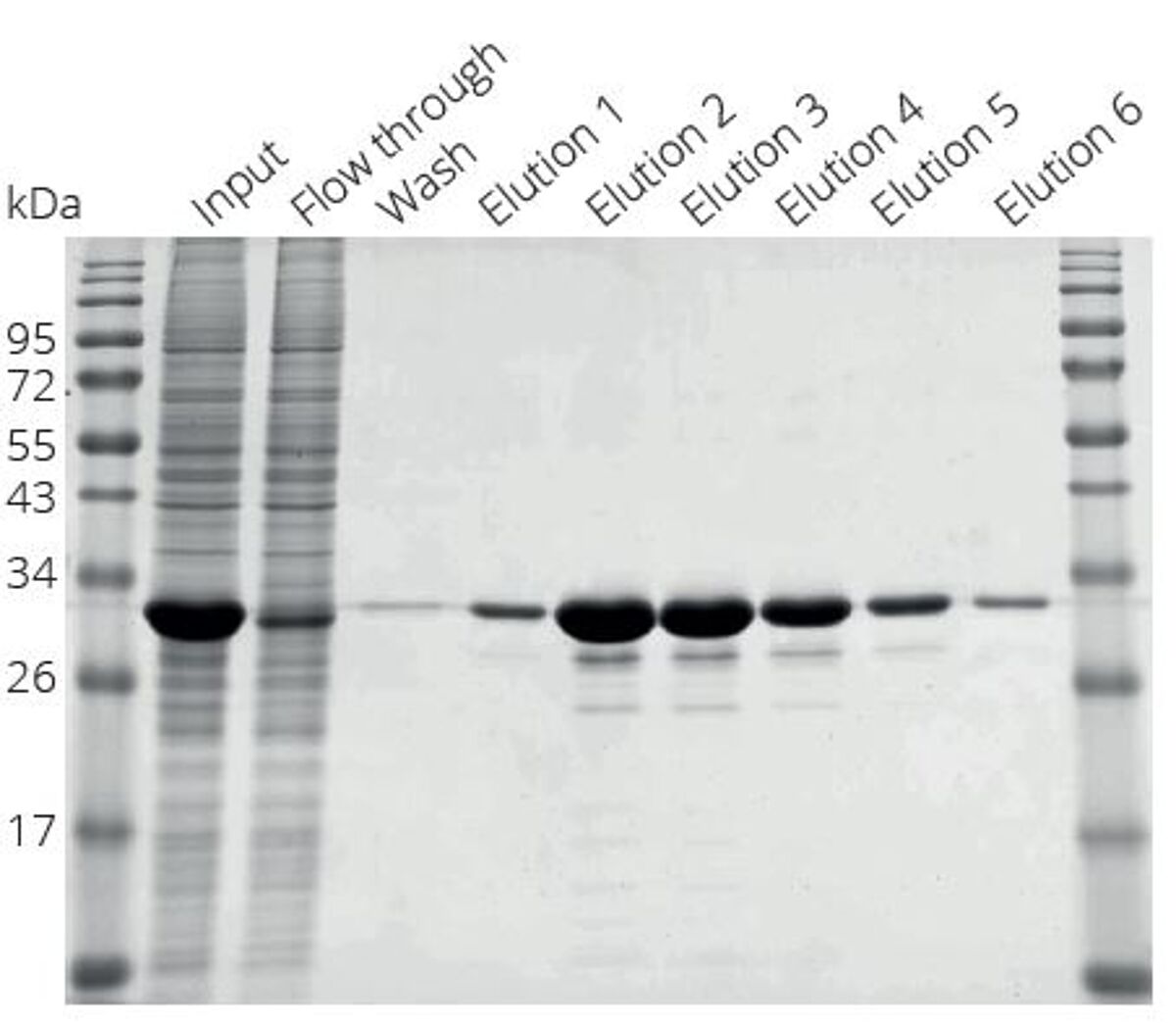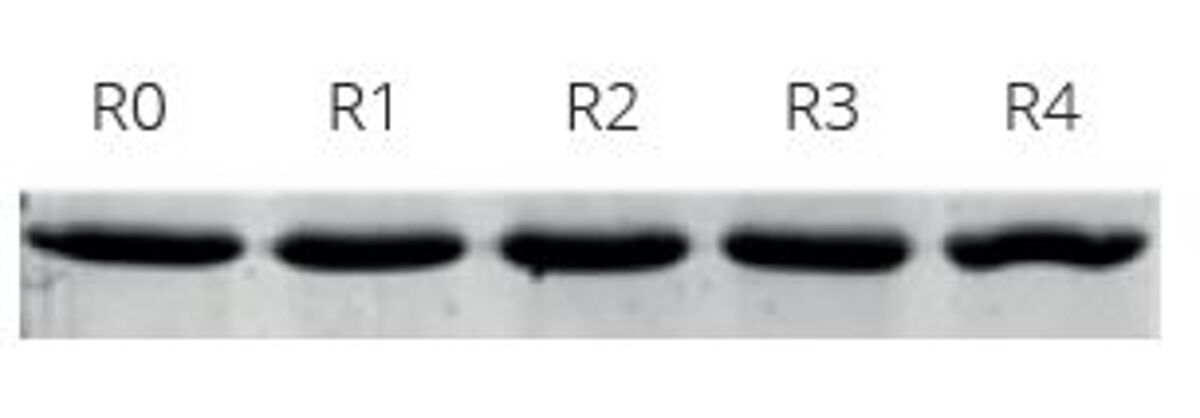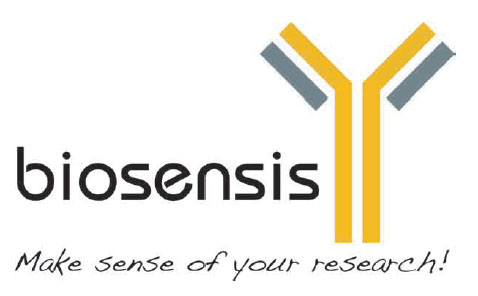ChromoTek offers innovative research reagents based on camelid antibodies, which are devoid of light chains and have a single antigen recognizing domain. In the absence of light chains, the fragment-antigen-binding (fab) part of these antibodies is reduced to a single domain, the so-called VHH (variable domain of heavy chain antibodies) domain or nanobody. This single domain contains a complete antigen binding site and is the smallest functional antigen binding fragment (around 15 kDa, only one tenth the size of a conventional antibody).
The alpaca antibody advantage
ChromoTek’s Nano-Traps are perfect tools for the rapid immuno- precipitation of proteins and their interaction partners with high specificity and efficiency. Their Nano-Boosters enhance the signal intensity of your targets in fluorescent microscopy. And their Chromobodies® allow you to analyze endogenous proteins in living cells in real time. In addition, their Spot-System is the first peptide-tag specific nanobody for universal capture and detec-tion applications. And now, ChromoTek offers Spot-CapTM, a Nanobody-based affinity resin optimized for one step protein purification of Spot-tagged proteins.

Nano-Traps
Nano-Traps are ideal for fast, reliable and efficient one-step immunoprecipitations. They pull down your proteins of interest (POI) and their interacting factors from cell extracts or organelles. Nano-Traps consist of a VHH, also termed nanobody, coupled to an immobilizing matrix. You can use Nano-Traps for a multitude of biochemical analyses such as:
- Immunoprecipitation (IP) / Co-IP
- Mass spectrometry
- Enzyme activity measurements
- ChIP / RIP analysis
Full list of Nano-Traps
GFP-Trap
Referenced in more than 1'700 scientific articles, ChromoTek's GFP-Trap is the gold standard for IP of GFP fusion proteins.
Specificity: GFP, EGFP, CFP, YFP, BFP and many more
Applications: IP/Co-IP, MS, enzyme activity measurements, RIP analysis
Formats: Agarose, magnetic agarose, magnetic particles, multiwell plate, iST kit
GST-Trap
Specificity: Glutathione S-Transferase (GST) from Schistosoma japonicum
Applications: IP/Co-IP, MS, on-bead enzyme assays, ChIP/RIP analysis
Formats: Agarose
Halo-Trap
Specificity: Halo-tag
Applications: IP/Co-IP, MS, enzyme activity measurements, ChIP/RIP analysis
Formats: Agarose, magnetic agarose, magnetic particles
MBP-Trap
Specificity: Maltose binding protein (MBP) from E. coli
Applications: IP/Co-IP, MS, on-bead enzyme assays, ChIP/RIP analysis
Formats: Agarose
Mdm4/HdmX-Trap
Specificity: Mdm4/HdmX. Species-Reactivity: tested on human; epitope: aa 1-129. Note that binding of Mdm4/HdmX-Trap interferes with binding of p53 to Mdm4/HdmX.
Applications: IP/Co-IP, MS
Formats: Agarose
MK2-Trap
Specificity: Human, mouse, hamster. Posttranslational modifications: MK2-Trap recognizes unphosphorylated MK2 and Phospho-MK2 (Thr222). Specificity on Phospho-MK2 (Thr334) was not tested.
Applications: IP/Co-IP, MS, on-bead enzyme assays
Formats: Agarose
mNeonGreen-Trap
Specificity: mNeonGreen, a bright monomeric yellow-green fluorescent protein derived from the lancelet Branchiostoma lanceolatum, and others
Applications: IP/Co-IP, MS, on-bead enzyme assays, ChIP/RIP analysis
Formats: Agarose, magnetic agarose, iST kit
Myc-Trap
Specificity: Myc-tag motif EQKLISEEDL at the N-terminus, C-terminus, or internal site of the fusion protein. The Myc-Trap does not bind endogenous c-myc.
Applications: IP/Co-IP, affinity purification, MS, on-bead enzyme assays, ChIP/RIP analysis
Formats: Agarose, magnetic agarose, iST kit
p53-C-term-Trap
Specificity: p53. Species-Reactivity: Tested on human, mouse. Isoform alpha. Epitope 302-393 aa
Applications: IP/Co-IP, MS
Formats: Agarose
p53-N-term-Trap
Specificity: p53. Species-Reactivity: Tested on human. Isoform alpha, beta and gamma. Epitope 1-81 aa
Applications: IP/Co-IP, MS
Formats: Agarose
PARP1-Trap
Specificity: Human PARP1, does not bind to PARP2, 3, and 9. Epitope within DNA binding domain of PARP1.
Applications: IP/Co-IP, MS, on-bead enzyme assays
Formats: Agarose
RFP-Trap
Specificity: mCherry, mRFP, mRFPruby, mPlum, tagRFP, mKate2 and many more RFP derivatives
Applications: IP/Co-IP, MS, on-bead enzyme assays, ChIP/RIP analysis
Formats: Agarose, magnetic agarose, magnetic particles, iST kit
SNAP/CLIP-tag-Trap
Specificity: SNAP-tag and CLIP-tag
Applications: IP/Co-IP, MS, on-bead enzyme assays, ChIP/RIP analysis
Formats: Agarose
Spot-Trap
Specificity: Spot-Tag, an inert 12 amino acid peptide tag with the sequence PDRVRAVSHWSS
Applications: IP/ Co-IP, IP/Co-IP for MS. For protein purification use Spot-Cap instead.
Formats: Agarose, magnetic agarose, magnetic particles, iST kit
TurboGFP-Trap
Specificity: TurboGFP and CopGFP from the copepod Pontellina plumata, maxGFP, maxFP-Green. The TurboGFP-Trap does not bind to jellyfish GFP and derivatives. More info
Applications: IP/Co-IP, MS, on-bead enzyme assays, ELISA
Formats: Agarose, magnetic agarose, iST kit
V5-Trap
Specificity: V5-tag sequence GKPIPNPLLGLDST at the N-terminus, C-terminus, or internal site of the fusion protein.
Applications: IP/Co-IP, affinity purification, MS, on-bead enzyme assays, ChIP/ RIP analysis
Formats: Agarose, magnetic agarose, magnetic particles, iST kit
DYKDDDDK Fab-Trap
anti-DYKDDDDK Fab-fragment coupled to agarose beads.
Specificity: 1x and 3x DYKDDDDK sequence (1x and 3xFlag®-tag) at the N-terminus, C-terminus, or internal site of the fusion protein.
Applications: IP/Co-IP, MS, protein purification, on-bead enzyme assays, ChIP/RIP analysis
Formats: Agarose
Nano-Boosters and Nano-Labels
ChromoTek's Nano-Boosters/Labels are very small, highly specific binding proteins. They are derived from single-domain alpaca antibody fragments termed VHHs or nanobodies which are covalently coupled to bright and stable fluorescent dyes. As these nanobodies are much smaller compared to conventional primary plus secondary antibodies (IgG complex), they are particularly suitable for effective labelling with minimal fluorophore displacement for super-resolution microscopy.
While Nano-Boosters, e.g. GFP- and RFP-Booster, enhance the signal of fluorescent proteins, Nano-Labels, e.g. Vimentin-, Histone- and Spot-Label, fluorescently label proteins.
Advantages
- Higher image resolution
- Excellent performance in IF and super-resolution microscopy
- Stabilization, enhancement and reactivation of fluorescent signals
- Less than 2nm epitope-label displacement minimizes linkage error
- Monovalent, recombinant single domain antibody fragment from camelid
Nano-Secondaries
Nano-Secondaries are secondary alpaca antibodies for higher resolution and better imaging, which are conjugated to Alexa Fluor® dyes. They can be used for Immunofluorescence, Super-resolution microscopy (SRM), Western blot and ELISA. As Nano-Secondaries are recombinantly produced, they are fully sequenced by design, which in combination with high QC standards ensures reliable and stable products virtually without batch-to-batch variation.
Why should you use Nano-Secondaries?
- Thoroughly validated for precise and reproducible staining
- Cross reactivity against multiple species’ antibodies and sera has been carefully determined
- Economical: only small amounts needed
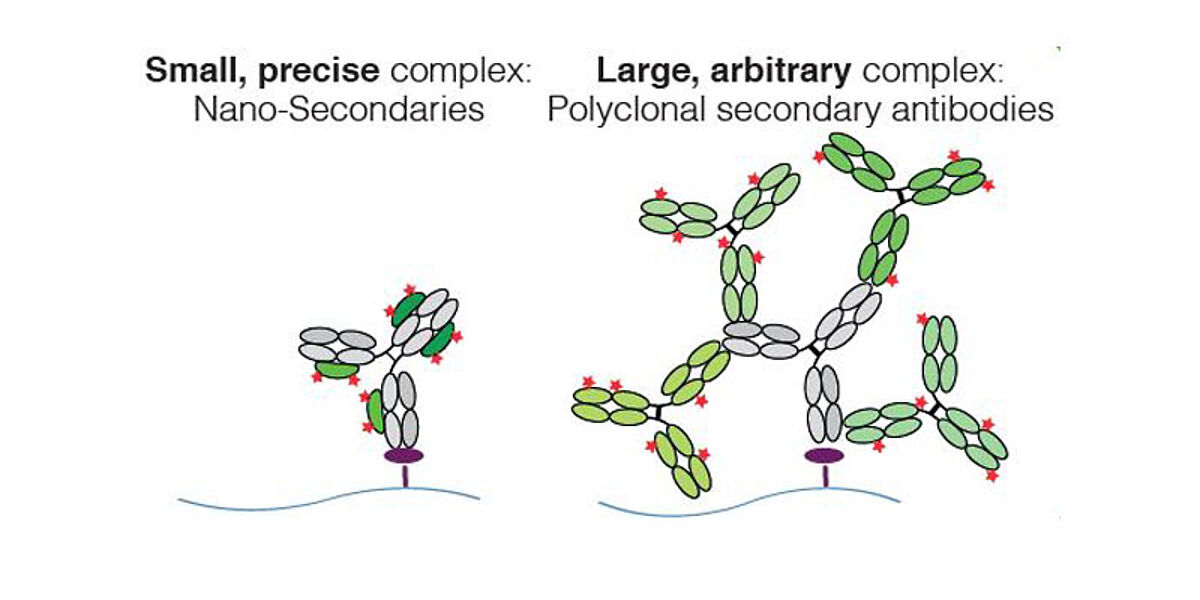
| Product name Size | Alexa Fluor® 488 | Alexa Fluor® 568 | Alexa Fluor® 647 |
|---|---|---|---|
| Alpaca anti-rabbit, IgG recombinant VHH shop now | |||
| 10 ul 100 ul | SRBAF488-1-10 SRBAF488-1-100 | SRBAF568-1-10 SRBAF568-1-100 | SRBAF647-1-10 SRBAF647-1-100 |
| Alpaca anti-mouse IgG1, Fc-specific recombinant VHH shop now | |||
| 10 ul 100 ul | SMS1AF488-1-10 SMS1AF488-1-100 | SMS1AF568-1-10 SMS1AF568-1-100 | SMS1AF647-1-10 SMS1AF647-1-100 |
| Alpaca anti-mouse IgG2b, Fc-specific recombinant VHH shop now | |||
| 10 ul 100 ul | SMS2BAF488-1-10 SMS2BAF488-1-100 | SMS2BAF568-1-10 SMS2BAF568-1-100 | SMS2BAF647-1-10 SMS2BAF647-1-100 |
| Alpaca anti-mouse IgG3 , Fab-specific recombinant VHH shop now | |||
| 10 ul 100 ul | | | SMS3AF647-1-10 SMS3AF647-1-100 |
Chromobodies®
ChromoTek's Chromobodies® are a novel species of extremely small intracellular functional antibodies. Chromobodies® are based on the antigen binding domain (VHH) derived from heavy chain antibodies of camelids genetically fused to a fluorescent protein (e.g.TagGFP or TagRFP from Evrogen). As opposed to conventional antibodies, these innovative fluorescent nanoprobes are suitable for real time analyses and can visualize endogenous cellular structures and processes in live cells.
All Chromobody® binding domains are carefully selected to not interfere with endogenous protein function and offer the unique possibility to trace native proteins in living cells.
Spot-Tag®, Spot-Trap® and Spot-Cap
The ChromoTek Spot-System is the first peptide-tag specific nanobody for universal capture and detection applications. It comprises Spot-Tag®, an inert 12 amino acid peptide-tag (PDRVRAVSHWSS), Spot-Trap®, the universal, rugged Spot-nanobody that specifically binds to Spot-tagged proteins with high affinity, and Spot-CapTM, the new and optimized nanobody-based affinity resin.
Spot-CapTM advantages
- Tight and selective binding to Spot-Tag® (PDRVRAVSHWSS)
- Optimized for fast and gentle one-step purification at 4°C
- High binding capacity and multiple regeneration cycles
- Cost efficient compared to other affinity resins
- Minimal contamination of host cell proteins
Spot-Tag® advantages
- More robust & stable
- Higher affinity
- Less background
- Less unspecific binding
- Higher resolution
Spot-Trap® advantages
- Less negatively charged
- Short
- Inert
ChromoTek's Spot-System can also be applied for CRISPR'ed Spot-Tags (see Brochures section for an application note).
In addition, ChromoTek also provides a growing number of exceptionally specific conventional antibodies.

